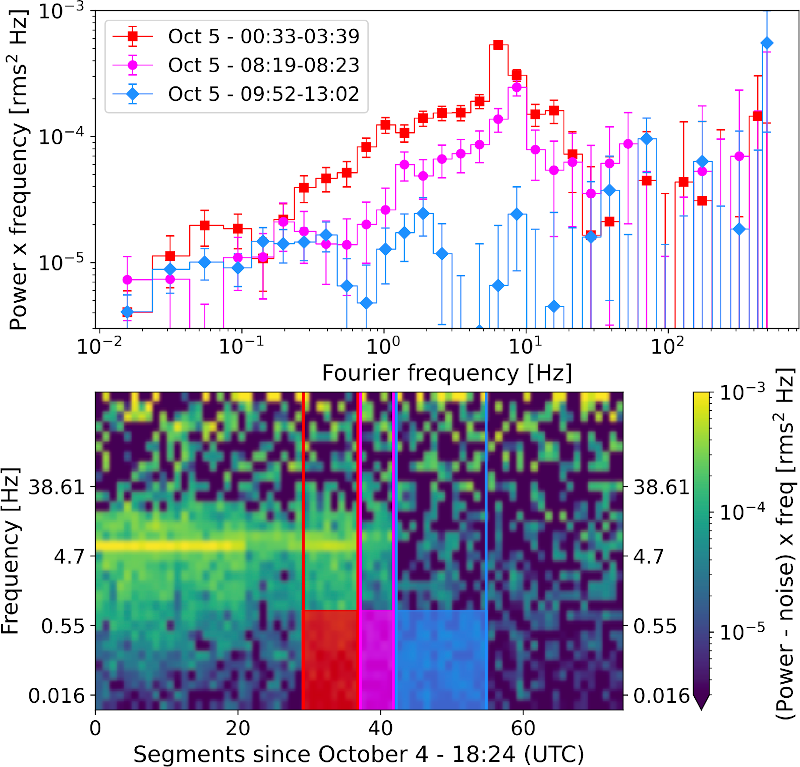NICER / ISS Science Nugget
for October 12, 2023
Accretion in Transition
Racing the Sun's inexorable incursion into our view of the inner parts of the Milky Way, NICER has been intensively targeting the black-hole X-ray binary Swift J1727-1613 since late August, with observations as often as permitted by the target's visibility in the ISS sky during orbit-night. The system's continuing outburst has temporarily made it one of the brightest X-ray sources known, and the evolution of such outbursts is of keen interest in the study of flows of matter around black holes and what they can teach us about extreme gravity. Rapid brightness variations in X-rays encode the geometry and the physics of accretion on spatial scales that cannot be probed by other means, and NICER's high-cadence measurements characterize both the changing timescales of these variations as well as their dependence on the wavelengths of X-ray light emitted.
Among other, less-organized forms of variability, accreting black-hole binaries exhibit quasi-periodic oscillations (QPOs) that gradually increase in frequency when emissions are dominated by high-energy X-rays. Over time, the balance shifts toward lower-energy X-rays, as the accretion flow forms an ever-tighter disk around the black hole, and QPOs are seen to disappear, usually abruptly. In its most recent observations of Swift J1727, NICER was able to pinpoint such a transition in time. As shown in the figure, successive power spectra showing the amplitude of X-ray variability on different timescales reveal a QPO around 7 cycles per second (Hz). Within a few hours, the QPO weakens and moves to higher frequencies, before disappears altogether. The dramatic changes in variability indicate that the flow around the black hole has transitioned to a different accretion state. Such changes are known to be accompanied by relativistic eruptions of plasma from the system, which were indeed observed by radio telescopes around the same time.
These results were reported this week in Astronomer's Telegram #16273 by N. Bollemeijer (Univ. of Amsterdam) and collaborators.

Upper panel: Power spectra from NICER observations of black-hole X-ray binary Swift J1727.8-1613 on October 4 and 5. Peaks in the red and pink traces between 7 and 10 Hz represent quasi-periodic oscillations of X-ray brightness at those frequencies; these oscillations weaken and disappear (blue trace; note the logarithmic scale) as the system transitions from one accretion state to another. Lower panel: The same phenomenon is seen in a dynamic power spectrum, which captures variability across a range of frequencies (vertical axis) in contiguous 64-second segments of data (horizontal axis) since the evening of October 4; colored bands indicate the time ranges used for the time-averaged spectra in the upper panel. (Figure credit: N. Bollemeijer & P. Uttley)
<< Previous
Main Index